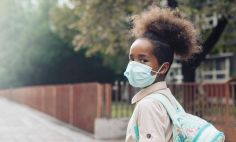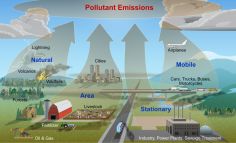Health Topics

Hotter days put human health at risk
Climate change and rising temperatures can affect your body in many ways
Extreme heat and unpredictable weather patterns are big news around the world. But did you know that climate change is not just a concern for scientists? It’s also worrying doctors.
Warmer global temperatures cause many environmental changes. These include droughts, increased risk of wildfires, more extreme temperatures, warmer oceans, and stronger storms. These changes can contribute to water-borne illnesses, infectious diseases spread by animals—especially insects such as ticks and mosquitoes—and food contamination. Wildfires release carbon dioxide from trees, and the smoke causes air pollution. Extreme heat can also damage your body.
These climate threats add up over time, which can change human health long-term. Our bodies may struggle more with multiple conditions, and it can also take a toll on our mental health.
Outside temperature affects body temperature
Humans evolved to adjust to their surrounding temperature to stay alive. Sweating is how the body naturally cools itself. But sometimes sweating isn’t enough on especially hot or humid days. The temperature of the Earth is rising, and when they remain high, it’s harder for your body to regulate itself. Hyperthermia is when your body stays too hot and can’t cool itself down. Hyperthermia can take the form of different heat-related illnesses, including:
- Heat cramps. These are muscle cramps, usually in the legs or stomach, caused by loss of salt from sweating. If you start having heat cramps, it’s important to drink lots of fluids, especially those with electrolytes. Also find a cooler space.
- Heat exhaustion. Symptoms include heavy sweating, cold and clammy skin, nausea, and vomiting.
- Heat stroke. This is when your body temperature exceeds 104 degrees Fahrenheit (40 degrees Celsius). Heat stroke can be life-threatening.
Who is most at risk for heat-related illness?
Groups most at risk because they are less able to regulate their body temperature include:
- Infants and children
- Pregnant people
- Older adults
- People who are overweight
- People taking certain medications
People with disabilities or mobility issues may not be able to get to a cooler place if needed. People who work or exercise outside are vulnerable to high heat.
Extreme heat can make chronic diseases worse, including cardiovascular (heart), respiratory (lungs), and cerebrovascular (brain and blood vessels) illnesses. It could also affect diabetes-related conditions, asthma, and chronic obstructive pulmonary disease (COPD).
People with lower incomes may not be able to afford home air conditioning or be able to weatherproof their homes to control temperatures. Those living in major cities are also affected by the urban heat island effect. Human-made surfaces like roads or building walls absorb and re-emit the sun’s heat. This causes surrounding air temperatures to rise.
And some factors—chronic disease, lower incomes, and urban heat islands—are even higher for people of color than for non-Hispanic White people. These groups are more likely to live in environmentally hazardous places due to housing and racial discrimination. Scientists predict that the health risks will be greatest for Black adults and people ages 65 and older.
What can you do to stay safe?
Stay as cool as possible! Remember to:
- Drink plenty of hydrating fluids. Water and sports drinks that replace salts and minerals are best for staying hydrated. Avoid caffeine, alcohol, and beverages with lots of sugar.
- Schedule exercise or outdoor activities when temperatures are lower. Aim for the early morning and evening.
- Get into an air-conditioned space. This can be at home, in the homes of friends and family, or in public places. Community centers, shopping malls, movie theaters, and libraries are some options. Local officials may also designate public spaces as cooling centers during emergencies.
- Dress for heat. Wear breathable clothes with lighter colors and moisture-wicking fabric.
If you have heat edema (swelling in your ankles and feet because you’re feeling hot or sunburned), try elevating your legs. If that doesn’t work quickly, check with a health professional.






